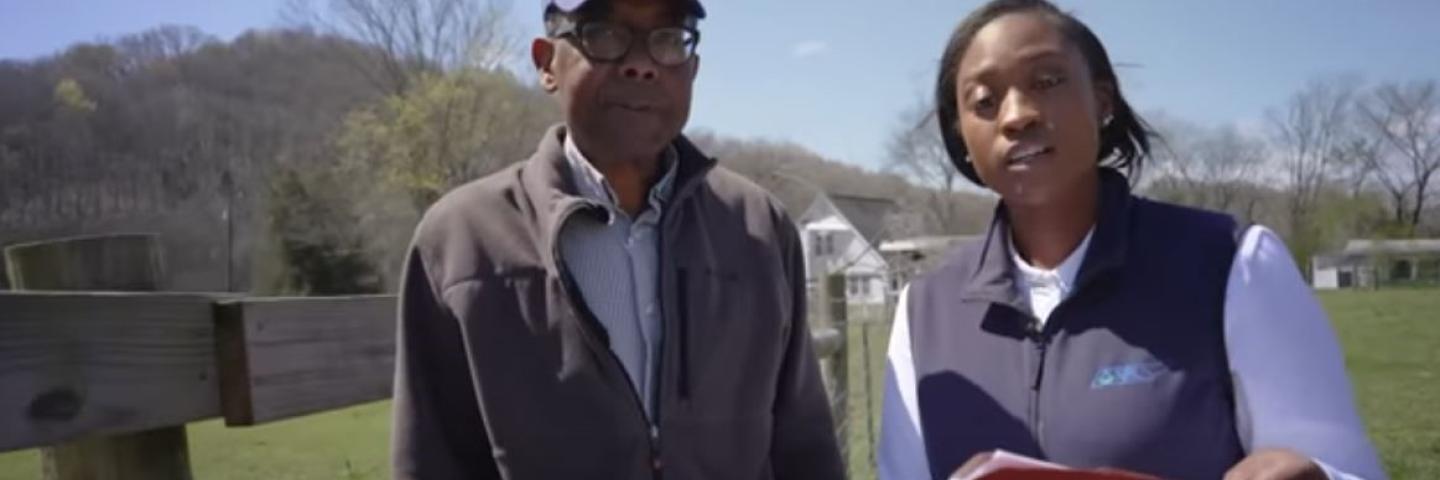
Apply Today!
www.usajobs.gov
Welcome to My NRCS Career!
Whether you are an established NRCS employee looking for career path information or you are browsing potential careers with NRCS for the first time, this website will provide the information you are seeking. You can:
- Join: Learn about life at NRCS Federal employment, or current job openings with NRCS
- Plan: Plan your career using career maps and career guide information for NRCS occupations.
- Learn: Learn about our current employment programs for students and recent graduates
Come Join Us
Do you want a career that can make a difference? We’re looking for highly motivated and skilled individuals interested in meeting the challenges of the dynamic and innovative field of agriculture.
To get a better idea of what a career with NRCS would be like, check out these videos:
Who We Are and What We Do
NRCS directly serves America's farmers, ranchers, and forest managers by providing them with financial and technical assistance, or advice, for their land. Our goal is to give our customers free, personalized advice and information, based on the latest science and research, to help them make informed conservation decisions.
Many of our staff work one-on-one with agricultural producers to provide them the knowledge and tools they need to conserve, maintain, and restore the natural resources on their lands and improve the health of their operations for the future.
Student and Recent Graduate Programs
Welcome to the NRCS Students and Recent Graduates information center! This is your one-stop site for information about student and recent graduate opportunities at NRCS. We offer internships for high school students and degree-seeking undergraduate and graduate students studying agricultural and natural resources-related fields such as plant pathology, agronomy, range science, soil science, forestry, ecology, botany, biology, civil and agricultural engineering. We also offer programs for recent graduates from qualifying institutions. Please find information regarding your eligibility below.
Pathways Programs
The Pathways Programs offer clear paths to opportunities with NRCS for students from high school through post-graduate school. The Pathways Programs consist of the Internship Program, the Recent Graduates Program, and the Presidential Management Fellows (PMF) Program.
Internship Program
This program is targeted at current students and individuals accepted for enrollment in a qualifying educational program. This program provides students enrolled in a variety of educational institutions, with paid opportunities to work in agencies and explore Federal careers while still in school.
The Recent Graduate program targets individuals who have recently graduated from qualifying educational institutions or programs. Eligible applicants must have applied within two years of degree or certificate completion. Successful applicants will be placed in a dynamic, one-year career development program.
Presidential Management Fellows Program
The PMF program is the Federal Government's premier leadership development program for advanced degree candidates. This program is aligned with academic calendars, allowing those who have received a qualifying advanced degree within the preceding two years to participate. The PMF experience is the most robust and substantive option available to student participants.
Higher Education Partnerships
USDA works to establish opportunities that ensure equitable participation in USDA programs, services, and resources for rural, tribal, and historically underserved students. These partnerships support capacity building initiatives that bolster education and career opportunities for students and faculty and help develop a strong pipeline of talent for USDA.
1890 Land-Grant Institutions National Program
The 1890 National Scholars Program is available to high school seniors entering their freshman year of college, and college sophomores. The program provides full tuition, fees, books, and room and board to students at 1890 Land-Grant Universities pursuing degrees in agriculture, food, natural resource sciences, or related academic disciplines. When the student has completed the academic and summer work requirements of the scholarship, USDA may convert the student to a permanent employee without further competition.
The USDA 1994 Tribal Scholars Program seeks to increase the number of American Indian and Alaska Native students studying agriculture, food, natural resource sciences, and related disciplines. The program provides full tuition, fees, books, and room and board to students pursuing a bachelor’s degree in agriculture, food science, natural resource science, or a related academic discipline at one of 35 federally recognized tribal colleges and universities. When the student has completed the program, USDA may convert the student to a permanent employee without further competition.
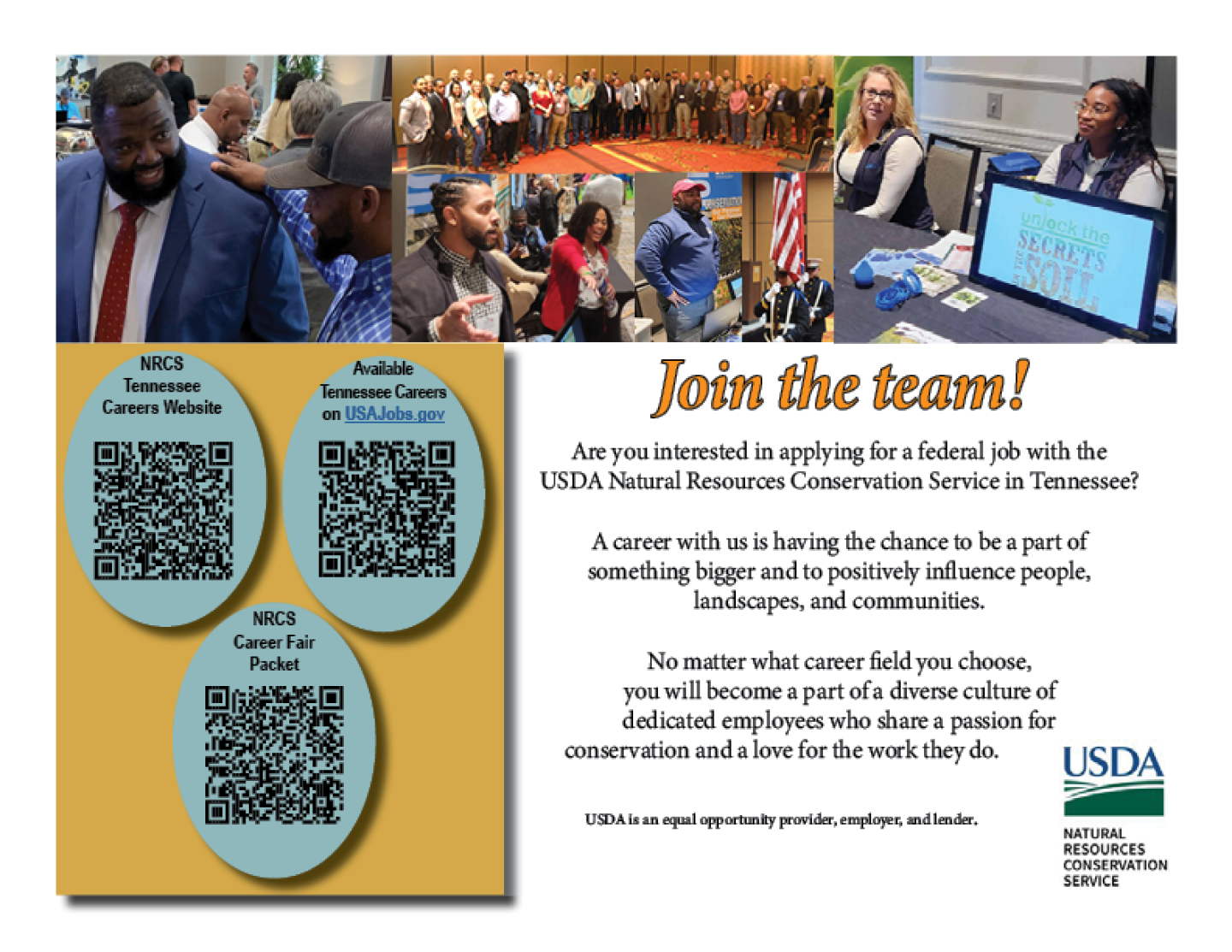
Careers and Related Links

Join the NRCS Team
At the USDA NRCS we need people who are committed to action. People who want to apply their education and experience to make sure that all of us enjoy the benefits of productive soil, clean water, clean air, and abundant wildlife that come from a healthy environment. NRCS offers career opportunities in Natural Resources and Conservation.
Our Conservation Careers include Soil Conservationists and Soil Conservation Technicians, Engineers, Soil Scientists, Rangeland Management Specialists, Biologists, and many more. NRCS also hires in the fields of finance, human resources, public and legislative affairs, and other professional fields aimed at supporting NRCS to meet its mission.
Click to search for current vacancies.
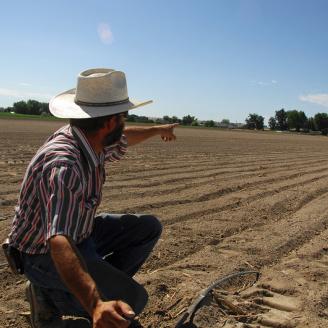
Life at NRCS
Learn About Life at NRCS
Take a few minutes to watch the Welcome to NRCS video below. Here you will learn more about what the Natural Resources Conservation Service does as an agency within the United States Department of Agriculture and what employees at NRCS are currently working on.
Welcome to NRCS from MyCareer@NRCS on Vimeo.
Learn more about a career at NRCS through the Day in the Life videos below. Hear from real Natural Resources Conservation Service employees about their day-to-day activities in their respective fields at NRCS.
Day in the Life - District Conservationist from MyCareer@NRCS on Vimeo.
Employee Testimonies
Employee Testimonials
Greg Hammer
“As a Soil Scientist at NRCS, I have the opportunity every day to make a difference in the lives of people and the world that we live in. The opportunities at NRCS seem just about limitless. I started with NRCS as an intern while I was still in college. Today I’m a Resource Soil Scientist working on projects across entire regions of the country. No matter what our job titles are, working at NRCS feels like family to me – because we care about what we’re doing. For me, NRCS is the best place to work.”
Kurt Readus
“I am so grateful to have a career with NRCS knowing that the services we provide to our great nation impact the future of agriculture in a positive, sustainable way. By providing technical and financial assistance to the current generation of agricultural producers, we support a strong, robust agricultural sector for the American economy. These services also allow greater opportunities for tomorrow’s generation of agricultural producers, who will provide the world’s food, fiber, and energy well into the future. I have worked at NRCS for many years and am currently the State Conservationist in Mississippi. Simply put, not only do I love what I do – I love who I work with and also who I work for.”
Jessica Jobe
“Working as a Soil Scientist for NRCS has provided me the opportunity to pursue my passion for the outdoors and the environment in a manner that serves in aiding area landowners in making sound land use and conservation decisions. I work with extraordinary people with common career and personal interests, which has created lasting bonds both professionally and personally. NRCS has provided me with exceptional training opportunities, both formal and on-the-job, to enhance my skills while encouraging career advancement. If you want to develop a career in Soil Science that is service-driven and people-oriented, NRCS is a remarkable organization.”
Vladimir Jean-Charles
“Four and half years ago when I first started at NRCS, a colleague said to me, “If my car broke down anywhere in the United States, all I would have to do is find the nearest NRCS office and I know the employees would take care of me and my family.” At first I thought it was cliché, until I started working and interacting with our employees. Today that statement rings true – so true that I have started saying the same thing to new employees as they come onboard.
“I have had the opportunity to serve in several different roles at NRCS, including my current role as Acting Director of HR Strategy. Every day I wake up feeling fortunate because I get to work with phenomenal co-workers and create “people strategies” that allow our employees to focus on what they do best: Helping people help the land.”
Jamie Carpenter
“NRCS is a great place to work because as an employee, you get to make a positive difference to the landscape by working with producers to conserve and protect our natural resources, which in return has a long-lasting effect on the quality of life for current and future generations.
“Since starting to work for NRCS as a Soil Conservationist in June 2002, I have been provided with excellent technical training as well as the opportunity to participate in the Emerging Leaders Development Program. I feel that as an NRCS employee I have had excellent opportunities to advance in my career. I have held three positions in two different states in my twelve years working for NRCS: Soil Conservationist, District Conservationist in Alabama, and now Assistant State Conservationist for Field Operations in Iowa. Each position has been rewarding and offered many opportunities to challenge myself. I am very thankful for my career with NRCS and I am very excited about what we will accomplish in the future as we help people help the land!”
Mary Podoll
“NRCS is a great agency with a truly fulfilling mission regardless of your discipline. The partnerships and conscientious delivery of programs to solve problems through a voluntary, locally driven effort for agriculture and natural resources allow you to go home every day feeling that you’ve accomplished something great. Currently the State Conservationist in North Dakota, I’ve enjoyed every aspect of my career and continue to look forward to the next part of this journey.”
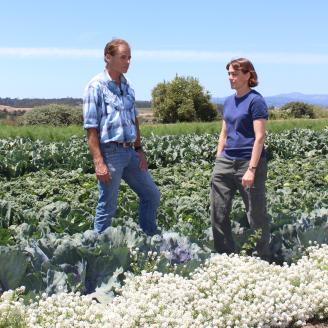
Internship Testimony
Internship Testimonials
Brandon King
“It’s essential for me to work with farmers to create innovative ways to build sustainable environments for the future. Working with the NRCS, I’m looking forward to broaden my knowledge of public policies while enhancing leadership and organizational skills. I’m overly excited about working with new individuals, whose primary goal is to develop a cleaner greener America.”
Rachel Trivette
“I’m looking forward to learning all of the details that go into NRCS. I want to immerse myself in each department, so that I can generate descriptive information for the public through different mediums.”
Leslie Hammond
“I am looking forward to learning more about conservation efforts in Kentucky so that I can transfer that knowledge and that of my schooling to local farmers. I am excited to work with others who are as passionate about soil and water quality as I am. I hope to learn to manifest that passion in an effective manner to improve the lives of farmers and those who depend on them.”
Becca Dominck
“I have followed in the footsteps of my father, grandfather and great grandfather and I with the training I am receiving as a student trainee; I will be prepared to begin my career with NRCS. As an American Indian, I hope I can be involved in sharing the NRCS careers opportunities with others.”
Christian Ransom
“My goal is to graduate from Tennessee State University, and soon after I would like to pursue a career with the NRCS because of the great experiences I’ve had with them thus far.”
Pathways Program
Students and Recent Graduates
Students & recent graduates
Welcome to the NRCS Students and Recent Graduates information center! This is your one-stop site for information about student and recent graduate opportunities at NRCS. We offer internships for high school students and degree-seeking undergraduate and graduate students studying agricultural and natural resources-related fields such as plant pathology, agronomy, range science, soil science, forestry, ecology, botany, biology, civil and agricultural engineering. We also offer programs for recent graduates from qualifying institutions. Please find information regarding your eligibility below.
Presidential Management Fellows Program
The Presidential Management Fellows Program (PMF) program is the Federal Government's premier leadership development program for advanced degree candidates. This program is aligned with academic calendars, allowing those who have received a qualifying advanced degree within the preceding two years to participate. The PMF experience is the most robust and substantive option available to student participants.
If you’re a current student or recent graduate, you may be eligible for federal internships and job opportunities through the Pathways and other student programs.

The Pathways Program offers federal internship and employment opportunities for current students, recent graduates and those with an advanced degree. There are three different paths available:
Eligibility
Internship Program
The Internship Program is for current students. If you’re a current student in high school, college, trade school or other qualifying educational institution, you may be eligible. This program offers paid opportunities to work in federal agencies and explore federal careers while completing your education.
Learn more about the Internship Program.
- Recent Graduates Program
- Presidential Management Fellows (PMF) Program
Other student programs and opportunities
There are several other opportunities available to students, including:
- Department of State Student Internship program
- Virtual Student Federal Service (VSFS)
- National Security Education Programs such as Boren Scholarships, Boren Fellowships and English for Heritage language Speakers Scholarships.
- Overseas Student Summer Hire program
- Summer jobs (for example, a lifeguard)
How do I know a job is open to Students & recent graduates?
In the job announcement look for the This job is open to section. When a job is open to Students you’ll see the Students icon: . When a job is open to Recent graduates, you'll see the Recent graduates icon: . There may be other groups listed that can also apply.
You can also select the Students or recent graduates filter. Your results will display all jobs open to students and recent graduates.
Documents you may need
Upload and submit through USAJOBS
You can upload and save documents to your USAJOBS account. Once uploaded, you can submit these forms with your job application as needed. Sign into USAJOBS or learn how to upload documents.
Begin your search
Search internship Search recent graduates jobs
Contact information
Please contact pathways@opm.gov with any issues or questions related to the Pathways Programs for students and recent graduates.
Additional resources
Hiring paths
- Open to the public
- Federal employees
- Veterans
- Military spouses
- National Guard & reserves
- Students & recent graduates
- Senior executives
- Individuals with disabilities
- Family of overseas employees
- Native Americans
- Peace Corps & AmeriCorps VISTA
- Special authorities
Glossary
Filter glossary terms
- Appointment
- Area of consideration
- Availability Pay
- Break In Service
- Career Appointment
- Certificate of Eligibles
- Competitive Position
- Competitive Service
- Competitive Status
- Creditable Service
- DD Form 214 (DD-214)
- Delegated Examining (DE)
- Detail
- Direct Hiring Authority
- Disabled Veteran
- Dual Compensation
- Duty Station
- Excepted Service
- General Schedule
- Grade
- Indefinite Appointment
- Locality Pay
- Merit Promotion Program
- Military Spouse Special Hiring Authority
- Optional Form 306 (OF-306)
- Pathways
- Permanent Appointment
- Preference (Veterans' Preference)
- Preference Eligible
- Premium Pay
- Probationary Period
- Recruitment Bonus
- Relocation Bonus
- Schedule A
- Schedule B
- Seasonal Employee
- Senior Executive Service
- Specialized Experience
- Standard Form 15 (SF-15)
- Standard Form 50 (SF-50)
- Surplus Employee
- Temporary Appointment
- Term Appointment
- Tour of Duty
- Veterans Employment Opportunity Act (VEOA)
- Veterans' Preference
- Veterans' Recruitment Appointment (VRA)
Higher Education Partnerships
Higher Education Partnerships
USDA works to establish opportunities that ensure equitable participation in USDA programs, services, and resources for rural, tribal, and historically underserved students. These partnerships support capacity building initiatives that bolster education and career opportunities for students and faculty and help develop a strong pipeline of talent for USDA.
1890 Land-Grant Institutions National Program
The 1890 National Scholars Program is available to high school seniors entering their freshman year of college, and college sophomores. The program provides full tuition, fees, books, and room and board to students at 1890 Land-Grant Universities pursuing degrees in agriculture, food, natural resource sciences, or related academic disciplines. When the student has completed the academic and summer work requirements of the scholarship, USDA may convert the student to a permanent employee without further competition.
The USDA 1994 Tribal Scholars Program seeks to increase the number of American Indian and Alaska Native students studying agriculture, food, natural resource sciences, and related disciplines. The program provides full tuition, fees, books, and room and board to students pursuing a bachelor’s degree in agriculture, food science, natural resource science, or a related academic discipline at one of 35 federally recognized tribal colleges and universities. When the student has completed the program, USDA may convert the student to a permanent employee without further competition.
NRCS Careers
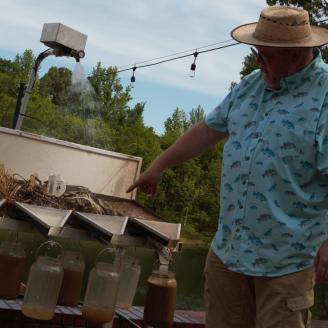
Soil Conservationist Career Group
Soil Conservationists at NRCS are responsible for working with landowners through conservation planning and assistance designed to benefit the soil, water, air, plants, and animals that result in productive lands and healthy ecosystems.
Soil Conservationists at the Natural Resources Conservation Service are line officers who plan the application of total resource management systems and provide conservation planning assistance from initial evaluation to completion. Soil conservationists possess a practical knowledge of the methods and techniques of soil, water, and environmental conservation as they relate to agricultural operations and land use measures. These personnel also help landowners with issues such as dealing with soil, water, air, plants, and animal resource concerns.
Soil Conservationists can also eventually become State Conservationists. In most situations, to become a State Conservationist you must either:
- Serve as an Assistant State Conservationist for Operations or Assistant State Conservationist for Programs.
- Have experience with the responsibilities of these two positions if you are unable to serve in both.
Soil Conservation Technicians at the Natural Resources Conservation Service assist soil and district conservationists in the implementation of total resource management system plans; provide assistance in conservation planning. Soil conservation technicians are responsible for surveying, staking, information gathering, designing, engineering plan preparation, and construction inspection, as well as providing training to NRCS and Soil Water and Conservation District personnel in these areas.
Click on career guide above to enlarge.
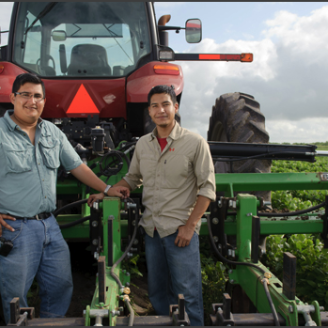
Engineering Career Group
Engineering positions at NRCS are responsible for the planning, design, and construction of engineering works of improvement for any conservation activities. These positions require the application of sound engineering principles, which includes adapting proven methods and procedures, as well as devising new design procedures incorporating the latest technological advances in conservation engineering.
Agricultural Engineers at the Natural Resources Conservation Service provide engineering assistance working with landowners, groups and units of government to apply and maintain a variety of conservation practices. Agricultural engineers are responsible for providing technical guidance and the overall planning, design, installation and maintenance of the agricultural engineering phases of conservation activities.
Environmental Engineers provide engineering assistance working with landowners, groups and units of government to apply and maintain a variety of conservation practices. Environmental engineers are responsible for providing technical guidance and the overall planning, design, installation and maintenance of the environmental engineering phases of conservation activities.
Civil Engineers provide engineering assistance working with landowners, groups and units of government to apply and maintain a variety of conservation practices. Civil engineers are responsible for providing technical guidance and the overall planning, design, installation and maintenance of the civil engineering phases of conservation activities.
Civil Engineering Technicians at the Natural Resources Conservation Service provide engineering assistance working with landowners, groups, and units of government to apply and maintain a variety of conservation practices. This job also includes the responsibility of designing engineering practices, preparing engineering drawings, computing quantities, and preparing cost estimates. This position does not require an engineering degree.
Click on career guide above to enlarge.
Soil Scientists at NRCS are responsible for studying the upper few meters of the Earth's crust in terms of its physical and chemical properties; distribution, genesis and morphology; and biological components.
Soil Scientists at the Natural Resources Conservation Service are responsible for studying the upper few meters of the Earth's crust in terms of its physical and chemical properties; distribution, genesis and morphology; and biological components.
Click on career guide above to enlarge.
Onboarding Portal
About the USDA
President Abraham Lincoln founded the USDA in 1862 with the goal of providing effective leadership to the nation on food, agriculture, natural resources and related issues. As a USDA employee, you are now part of a storied, 150-year tradition of excellence in public service.
Since 1862, the dedicated public servants at the USDA literally help hundreds of millions of Americans every day. As Agriculture Secretary Thomas Vilsack said, “We are the People’s Department – the place you can make a difference.”
We’d like you to learn more about the USDA and your specific Agency or Office. On this page, you will find information about the Department, our history and mission, our leaders, our Agencies and Offices. Welcome!
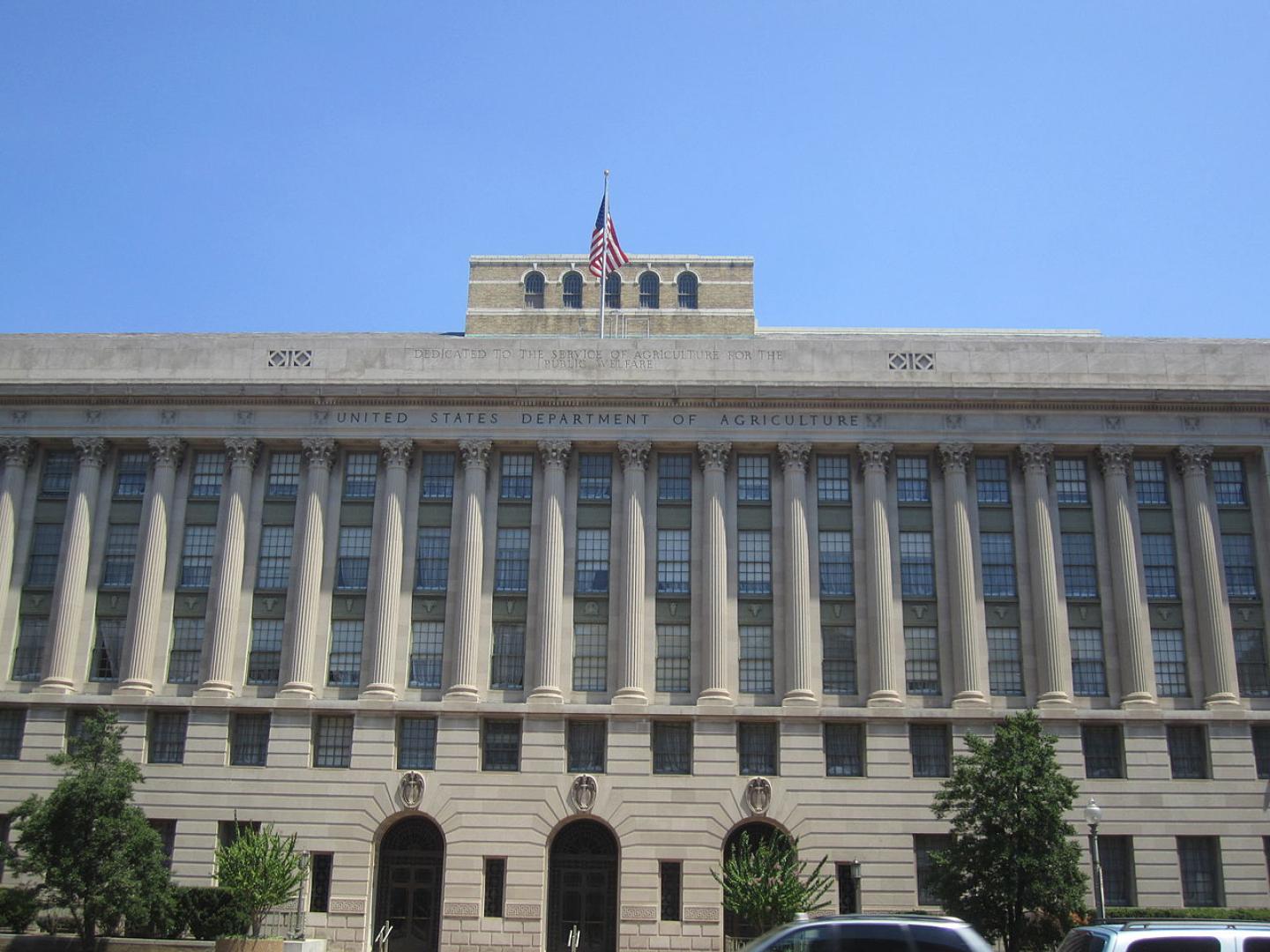
USDA Overview
USDA Agencies
The USDA has 7 Mission Areas. Each Mission Area contains one or more USDA Agency. Below, you will find links to each USDA Agency. Select an Agency from the list and you will be directed to that Agency’s website.
- Agricultural Marketing Service
- Animal and Plant Health Inspection Service
- Agricultural Research Service
- Center for Nutrition Policy and Promotion
- Economic Research Service
- Farm Service Agency
- Food and Nutrition Service
- Food Safety and Inspection Service
- Foreign Agricultural Service
- Forest Service
- National Agricultural Library
- National Agricultural Statistics Service
- National Institute of Food and Agriculture
- Natural Resources Conservation Service
- Risk Management Agency
- Rural Development
Offices at USDA Headquarters
In addition to the Agencies listed above, the USDA has offices that do not fall under a specific Mission Area.The Offices at the USDA headquarters are listed below in alphabetical order. Select an office from the list and you will be directed to that Office’s website.
- Chief Financial Officer
- Chief Information Office
- Civil Rights
- Congressional Relations
- Correspondence Management
- Departmental Management
- General Counsel
- Homeland Security and Emergency Coordination
- Inspector General
- National Appeals Division
- Office of Communications
- Management Services
- Office of Administrative Law Judges
- Advocacy and Outreach
- Office of the Judicial Officer
- Office of Operations
- Office of Procurement & Property Management
- Office of Small and Disadvantaged Business Utilization
- Office of the Chief Scientist
Labor Representation
Many USDA positions are covered by a Collective Bargaining Agreement. View a list of USDA offices and Agencies with Labor Organization representation and Agreements.
New Employees or Detailees working in the National Capital Region
If you have been assigned to the National Capital Region, you will find helpful information below concerning headquarter buildings, public transportation, etc.
The South and Whitten Buildings
This briefing provides information about both headquarters buildings, including services available, room number system, floor plans, etc.
Getting Around
Living and working in the nation’s capital is exciting. Many of our buildings are located in beautiful, historic areas and all are easily accessible by all forms of commuting. Whether you walk, ride Metro, bike or drive to work, here is some information that will help get you there:
Shuttles
Shuttles and other Government vehicles are available for use in performing your official responsibilities. Except for a very few senior USDA officials, Government transportation may not be used to travel to work from home, or from home to work, and that includes Government sponsored shuttle services. The links below will provide information on shuttle systems in the DC area:
Occupant Emergency Plan
All employees need to know what to do in case of a fire or other building emergency. Please read the Headquarters Occupant Emergency Plan.

Welcome to the USDA/Pay & Benefits
Congratulations on your new employment with the USDA. Since 1862, the public servants of the USDA have worked diligently to improve the lives of millions of our fellow Americans. Because the work we do affects every American, every single day, we are known as the “People’s Department.”
And now, you are part of this proud history of public service and the important work we do. Welcome to the USDA.
The site will take you step-by-step through the new employment process. Simply select the issues on the left side of this page. Begin with Before You Report, which will guide you through the process of getting ready for your first day at work. There are a number of forms and some training that we would like you to complete before your first day, so please allow about three to four hours to complete all of the material. If you have any problems or questions, please do not hesitate to contact your Human Resources Specialist.
For information on Reasonable Accommodations, please select the "Resources" tab.
Again, welcome to the “People’s Department.” We are pleased and proud to have you on board!
Before You Report
Welcome to the “People’s Department”. We are pleased to have you join us in our proud tradition of public service to our fellow Americans.
During your first week at USDA, you will be busy learning about the organization, getting your pay and benefits arranged and finding out about your workplace. We want to help you hit the ground running and start your employment as smoothly as possible, so we have organized this page to help answer questions and get you started before your first day. Please follow this page from beginning to end, and be sure to note the items that must be done before you start working.
Your Supervisor
Your new supervisor will contact you by phone or e-mail at least one week before your start date. He or she will welcome you and answer any questions you may have. If you do not know who your supervisor is or have not heard from one, simply contact your Human Resource Specialist.
Your Sponsor
To help you with your transition, we have assigned you a sponsor. Your sponsor is a coworker who is not in your chain of command, assigned to you to help you learn the ropes. Once you start, your sponsor will give you a tour, help you become acclimated to USDA culture and answer your questions. We encourage you to reach out to your sponsor any time you have any concerns or questions. Your sponsor is there to help you.
New Supervisors
If you are a new supervisor, welcome! Follow the rest of this page for the regular onboarding procedures.
Before You Report To USDA
Before your first day, you will need go to Training. There are three training courses to take, and it takes about two hours to complete them. Each can be completed separately, so you don’t have to do it all at once. Just be sure to complete them all before your start date.
To start your training, go to the Training tab at the top of the page.
Day 1 – Your Reporting Day
Your first day is exciting! Remember to give yourself plenty of time to find the room where you were directed to report. And please bring with you the following items:
- A copy of the training certificate(s) for each course you finished.
- Appropriate identification documents – see table below. Bring one item from List A or one item from BOTH List B and List C.
LISTS OF ACCEPTABLE DOCUMENTS
All documents must NOT be expired
LIST A (Only one document required)
Documents that Establish Both Identity and Employment Authorization
- U.S. Passport or U.S. Passport Card
- Permanent Resident Card or Alien Registration Receipt Card (Form 1-551)
- Foreign passport that contains a temporary 1-551 stamp or temporary 1-551 printed notation on a machine- readable immigrant visa
- Employment Authorization Document that contains a photograph (Form 1-766)
- In the case of a nonimmigrant alien authorized to work for a specific employer incident to status, a foreign passport with Form 1-94 or Form I-94A bearing the same name as the passport and containing an endorsement ofthe alien's nonimmigrant status, as long as the period of endorsement has not yet expired and the proposed employment is not in conflict with any restrictions or limitations identified on the form
- Passport from the Federated States of Micronesia (FSM) or the Republic of the Marshall Islands (RMI) with Form 1-94 or Form I-94A indicating nonimmigrant admission under the Compact of Free Association Between the United States and the FSM or RMI
LIST B (Must be accompanied by a document from List C)
Documents that Establish Identity
- Driver's license or ID card issued by a State or outlying possession of the United States provided it contains a photograph or information such as name, date of birth, gender, height, eye color, and address
- ID card issued by federal, state or local government agencies or entities, provided it contains a photograph or information such as name, date of birth, gender, height, eye color, and address
- School ID card with a photograph
- Voter's registration card
- U.S. Military card or draft record
- Military dependent's ID card
- U.S. Coast Guard Merchant Mariner Card
- Native American tribal document
- Driver's license issued by a Canadian government authority
For persons under age 18 who are unable to present a document listed above:
- School record or report card
- Clinic, doctor, or hospital record
- Day-care or nursery school record
LIST C (Must be accompanied by a document from List B)
Documents that Establish Employment Authorization
- Social Security Account Number card other than one that specifies on the face that the issuance of the card does not authorize employment in the United States
- Certification of Birth Abroad issued by the Department of State (Form FS-545)
- Certification of Report of Birth issued by the Department of State (Form DS-1350)
- Original or certified copy of birth certificate issued by a State, county, municipal authority, or territory of the United States bearing an official seal
- Native American tribal document
- US. Citizen ID Card (Form 1-197)
- Identification Card for Use of Resident Citizen in the United States (Form 1-179)
- Employment authorization document issued by the Department of Homeland Security
You will spend most of your first morning at USDA in a classroom setting. During this time, you will be sworn in, learn more about your benefits and have an opportunity to finish completing all necessary forms. In addition, we will begin the identification badge process.
USDA Identification Badge
Getting a USDA identification badge takes several steps. You may be issued a temporary badge when you arrive. If you work in a GSA building, you will also likely be required to obtain a GSA badge. During your first day, the Human Resources staff will guide you through this process.
Your permanent badge is a standard US Government badge. This badge contains your photo and a computer chip. You will need this badge to enter any USDA space and this badge can also serve as a second form of a Government issued identification. As USDA moves forward, you will eventually need this badge to access your computer.
Your permanent badge is often called by two different names – LincPass (after President Lincoln, the founding President of USDA) or HSPD-12 Card. HSPD -12 is the Government directive that requires the standardize card.
To help you understand how you get your permanent card, you can view a flow chart of the process.
For the weeks following your orientation, you will focus on learning your job and experiencing USDA. At the end of your first month, your supervisor will meet with you and give you your performance plan for the remainder of the fiscal year (Oct 1 - Sep 30). This plan will help you focus on your efforts and will be used to evaluate your performance at the end of the performance period (Sep 30th). Your supervisor will also work with you to finalize your Individual Development Plan (IDP). You are not evaluated on your IDP; your IDP simply documents the kind of training and developmental activities that you agree to do in the coming year.
Pay and Benefits
The USDA is committed to public service. We are also committed to our employees through our generous pay and benefits program. You will learn more about this once you start at USDA. This page will give you important information on your pay and benefits prior to your arrival. As always, if you have any questions, please contact your HR Specialist.
Eligibility
While most benefits are available to all employees, some are not. To help you understand what benefits you are entitled to as a USDA employee, please contact your HR Hman Ressource Specialist
Benefits
Once you know what benefits you can receive as a USDA employee, we want you to be able to explore them and begin to understand them.
Your benefits package will depend on the length of your appointment and appointment type. Please contact your HR Operations Human Resource Specialist for specific information regarding your benefits.
Benefits Information on AgLearn
The USDA’s online learning tool, AgLearn, offers a wealth of information on Federal benefits, including information on retirement planning, Thrift Savings Program, Social Security and Medicare, Long Term Care Insurance, Flexible Spending Accounts and more. Once you have your eAuthentication username and password you can access AgLearn to learn about available benefits and view courses.
Flexible Spending Accounts
As an FSAFEDS participant, you will experience tax savings benefits that come with a flexible spending account. Whether you are contributing $250 or $5,000 to your account you will be paying less in taxes and putting more money into your pocket. Be sure to explore FSAFEDS soon because newly hired employees have 60 days after their start date to enroll in the FSAFEDS Program. Learn more about:
The many health care expenses that are eligible;
How day care expenses are also covered;
How easy it is to use;
By visiting: www.FSAFEDS.com
Pay Calendar
USDA employees, like most other Federal employees, are paid every two weeks. The official USDA payday falls on Thursdays. However, most of the time, electronic funds are sent to your financial institution the weekend before. Funds are actually available to you based on your financial institution’s policies, so be sure to check with them.
Here’s a link to the pay calendar.
Salary and Wages
When you accepted your position at USDA, a specific salary was agreed upon. The Office of Personnel Management (OPM) governs pay for all Federal employees. You can review official pay charts by visiting the OPM web site.
- Executive Schedule (not SES): Executive level pay information.
- General Schedule Most USDA employees are covered under the General Schedule (GS) pay system. GS pay varies based on where your duty station is- this is called locality pay. Be sure you check the pay chart for your area. If your area has no locality pay, then use the "Rest of the United States" pay chart.
Employee Personal Page
Your pay, leave and other important personal information about the benefits you selected can be found on the Employee Personal Page.
Commuter Transit Subsidy Program
Federal employees who use public transportation to and from work can receive a subsidy from the USDA to cover all or part of this cost. The USDA has a transit subsidy coordinator who can provide you with specific information about the program and the current maximum subsidy amount. View a list of the coordinators.
FAQs on the Commuter Transit Subsidy Program:
Q1: Who is eligible for the USDA Commuter Transit Subsidy Benefits Program?
A1: All USDA salaried employees, including part-time, temporary, stay-in-school and those who work on an intermittent work schedule, provided they use mass public transportation, which includes, but is not limited to: buses, subways, rail, light rail, elevated rail, streetcars, trolleys, ferries and/or authorized vanpools to commute daily to and from work and do not receive a free Federal parking benefit. Student volunteers are also eligible.
Q2: How much commuter transit subsidy benefit am I eligible to receive?
A2: Up to the current statutory limit or your actual commuting cost, whichever is less. Your coordinator can supply you with figures.
Q3: How do I apply?
A3: Employees must complete and sign both pages of the AD-1147, Public Transportation Benefit Program Application . Submit these to your designated Commuter Transit Subsidy Benefits Program Coordinator in hard copy, fax or via scanned email. View a listing of coordinators .
Q4: When can I apply for the program and when are benefits effective?
A4: Employees may apply for benefits upon arrival at USDA. They become eligible for benefits on the date of their signed application.
Q5: What if my commuting costs increase or decrease, my name changes, my address changes, etc?
A5: A new application is required.
Q6: What if I no longer wish to commute using mass public transportation and/or eligible vanpool, retire, resign or transfer to another federal agency?
A6: You must cancel your subsidy with your transit coordinator and return any fare media that you have received but that you will not be using to commute. You may also elect to reimburse USDA for that amount of fare media via a check to USDA.
Q7: What if my fare media is lost, stolen or damaged?
A7: Lost, stolen and/or damaged fare media will not be replaced.
Q8: How will I receive my benefits?
A8. Either in the form of Smart Benefits or Smart Vouchers.
Q9: Are there any restrictions to this program?
A9.
- You may not give, sell, transfer, discard and/or destroy the fare media
- You may not continue to accept and/or receive fare media if you are no longer eligible for the benefit (for example, if you leave USDA)
- Benefits are for daily commuting only and must not be used for traveling back and forth to agency sponsored training, meetings or other events
Employee Pre-Tax Parking Program
Under current IRS rules, USDA employees may qualify for pre-tax parking rates. Several restrictions apply:
- Employees must take mass transportation, or ride in a vanpool, or in a carpool of two or more persons from the parking location to work.
- Employees must pay to park at an eligible location. Eligible locations include a Metro parking lot, a commercial lot, a privately owned parking lot, a parking garage, a parking meter or employer-provided parking.
- Employees may only qualify for up to $230/month. For example, if your parking costs are $300 a month, only $230/month may be excluded from Federal tax.
Remember that you will still receive the same amount in your paycheck; the only change is that the qualified amount is not taxed.
FAQs on the Pre-Tax Parking Program
How do I apply?
Eligible employees should submit an AD 1185 Pre Tax Parking Application to their designated transit subsidy coordinator. The transit subsidy coordinator will submit the approved application to the servicing personnel office for inputting into the National Finance Center personnel/payroll system. View a list of the coordinators.
How much will I save?
If you are eligible for the maximum monthly amount of $230:
Multiply $230 x 12 months = $2,760.00
Divide by 26 pay periods = $ 106.15
$106.15 will not be taxed each pay period. You save that amount of Federal tax, based on your tax bracket.
For a carpool to qualify, must all members be USDA employees?
No
Can an employee driving a vanpool or carpool be authorized for pre-tax parking?
Yes. Example: The primary driver of a vanpool or carpool that parks in an eligible parking location and whose members then walk to work is eligible for pre-tax parking.
Is proof of the cost of parking required?
Yes. It may be in the form of a parking lot receipt or, if no receipt is provided, the application itself will suffice.
What document is used to report the amount of an employee’s pre-tax parking to the Internal Revenue Service?
The W-2 form.
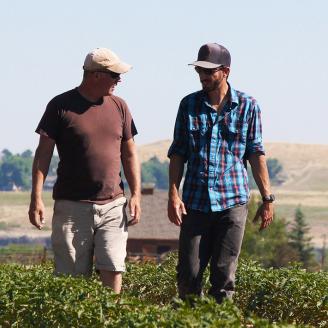
Training/Supervisor/Sponsors
The Federal Government has high standards and high expectations for its employees. To help achieve and maintain these high standards, all Federal employees are required to complete certain training. Some training (such as the initial Ethics Training) is mandatory for all new employees and must be taken once the new employee begins their USDA employment and is assigned an AgLearn account. Some trainings are not mandatory, but provide important information for you to better perform your job duties. Other trainings provide important information regarding cyber security which we encourage you to take before you start your Federal employment so that you are prepared on your first day.
MANDATORY ETHICS TRAINING REQUIRED BY LAW ONCE EMPLOYEES ENTER ON DUTY
- Mandatory Initial Ethics Training: Here at the USDA we pride ourselves on the fact that our employees work diligently to meet both the letter and the spirit of the ethics laws and regulations. In order to become well-versed on these rules and regulations, ethics training is essential and is required by law (5 C.F.R. Section 2638.304). All new employees nationwide must complete "Orientation Ethics" training after their arrival at USDA. This Initial Ethics Training is available in AgLearn.
INFORMATION SECURITY AWARENESS TRAINING YOU ARE ENCOURAGE TO TAKE PRIOR TO ENTRY ON DUTY
- Information Security Awareness and Rules of Behavior Training (ISA)
- You can take the course "USDA Information Security Awareness" online and take the test to obtain your certificate of completion. You can take the course on or before your first day. Passing the test is required to access your email and other computer systems in USDA.
- If you do not have an Agency AgLearn account yet, and your Agency requires this course and to be completed before showing up for duty, please access the online course and take the test. You will have the opportunity to receive a certificate of completion after passing the test. Please go to https://deliver.courseavenue.com/Login/usda for information on how to access the course.
- Alternatively, you can also take the paper-based version of the course. There is no certificate for the paper-based version of the course; you must take and pass the test on paper. Contact your HR specialist or agency contact for information on how to take the paper-based version of the course.
RECOMMENDED TRAINING ONCE EMPLOYEES ENTER ON DUTY
- Personally Identifiable Information (PII) Lite Course Training is available in AgLearn and recommended for employees, contractors, affiliates and stakeholders.
- Freedom of Information Act Training is available via AgLearn, and recommended for employees, contractors, affiliates, and stakeholders.
Supervisors
As a supervisor, your role in the onboarding of the USDA’s new employees is a critical one. Onboarding is the process of integrating employees into their new work environment. It starts before their first day, goes beyond the orientation process and follows the employee through their first year of employment.
Effective employee onboarding serves three interrelated purposes. First, it ensures that the employee feels welcome, comfortable, prepared and supported. Second, these feelings increase the new employee’s ability to be productive and successful, both immediately and over time. Finally, this employee success leads to satisfaction and retention, which allows the USDA to continue to fulfill its mission.
Employees arrive at their new jobs excited and engaged. Your job, as their supervisor, is to channel that energy toward success by helping them become embedded in the organization. As a supervisor, your role is to welcome your new employees, introduce them to the culture and values of the USDA, explain what is expected of them, and supervise their employment and experience. We are counting on you to help make their transition and employment as smooth and successful as possible.
The onboarding process begins with your first phone call the week before the employee starts work and continues with you meeting with them on the first day. Each new employee should receive a welcome letter, preferably before their day at work, using this template.
While onboarding is a year-long process, the first 90 days are critical. To facilitate your role, here is a link to the checklist you will need to focus on during your employee’s first 90 days.
It is your responsibility to ensure that each of these items is covered with your new employee. By attending to the items on the checklist, you will create a stronger bond with your employee and ensure a faster path to productivity and inclusion. We also have developed a guide to assist you.
Being an effective supervisor is critically important for the success of new employees. We appreciate your attention and dedication to this crucial process. Please contact your HR specialist with any questions regarding this process.
Sponsors
Thank you for agreeing to be a sponsor. Your role is vitally important for the success of new employees. As a sponsor, you will help new employees through their transition, help them feel welcome, answer their questions and be there when they need help. You are a critical peer link and an essential part of their early employment. We appreciate your service and dedication to this very important process.
This Sponsor Guide will assist you in performing this important responsibility. Please read it carefully. If you have any questions, please contact your Supervisor or HR Specialist.
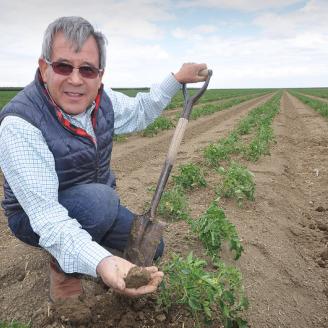
Additional Resources and Policies
In addition to the pay and benefits packages outlined earlier, the USDA offers many important resources and programs to help and support our employees. This page provides information on these programs and resources. And remember, if you ever need help or have a question, don’t hesitate to contact your HR Specialist and/or Supervisor.

Merit System Principles
The Merit System Principles are nine basic standards governing the management of the executive branch workforce.
Prohibited Personnel Practices
There are thirteen prohibited personnel practices, including reprisal for whistleblowing, which are defined by law at � 2302(b) of title 5 of the United States Code (U.S.C.). A personnel action (defined in 5 U.S.C. � 2302(a)(2(A) to include appointments, promotions, reassignments, disciplinary actions, and other personnel matters) may need to be involved for a prohibited personnel practice to occur.
Reasonable Accommodation Process
The USDA provides reasonable accommodation for qualified employees and applicants with disabilities adhering to applicable Federal regulations and guidelines. We provide reasonable accommodation for the known physical or mental limitations of qualified employees and applicants with disabilities when those disabilities or limitations are properly documented and when they meet Federal regulatory requirements. If you believe you have a qualifying disability or limitation, you should first notify your supervisor. When referred to your Reasonable Accommodation Coordinator you may be asked to complete the Confirmation of Reasonable Accommodation Request form. As soon as you have completed the form and the required documents (such as a letter from your health care provider), you should give the form and documents to your Reasonable Accommodation Coordinator. For additional contact information you can download the list of managers.
USDA TARGET Center
The USDA TARGET Center’s mission is to ensure that all USDA employees have safe and equal access to electronic and information technology by assessing, educating, and advocating for the integration of assistive technology and worksite accommodations. For more information visit the TARGET Center website.
Employee Assistance Program
The Employee Assistance Program provides free, confidential services for employees and family members who are living in their home or who are covered by the employee’s health insurance plan. The EAP offers services in the following areas:
- Counseling Services: short-term assessment and referral to community resources based on client needs (emotional, alcohol, drugs, etc.).
- Financial and Legal Services: free consultation with financial experts and licensed attorneys to provide assistance with legal and financial questions.
- Management Consultation: assistance for managers and supervisors when responding to a troubled employee.
- Critical Incident Response: counselors to assist in managing traumatic situations such as threats, acts of violence, natural disasters, injury or death.
- Education and Training: training programs to support both supervisors and employees on the benefits and functions of the EAP.
Records and conversations between counselors and employees are private in accordance with both state and Federal laws.
Equal Employment Opportunity Complaint Process
To learn how the EEO process works, visit the Civil Rights website.
Key Links
Here are a few web links to important information you may find helpful during your USDA career. Some may require you to have an eAuthentication to access.
- Directives and Policies
- Employee Personal Page (your pay, leave and benefits):
- Forms
- USDA Phone Directory
- USDA Internet
USDA does not endorse either of these publications. The links are provided here because these publications cover Federal employee issues and you may find these as useful sources in keeping current on various Federal topics.
On The Job Injury
If you are injured in the performance of your official duties, the Federal Workers' Compensation Program may provide coverage, including medical expenses and some of your lost salary. If you are injured, notify your supervisor as soon as you can.
Safety
Your safety is of paramount concern. We recommend you review the safety information for non-supervisors and supervisors. There is an extensive amount of information for supervisors that deal with training required for individuals involved in all types of work. If you locate the type of work you supervise, you can then determine the appropriate training required for your employees.
Occupant Emergency Plan
Every employee needs to know what to do in case of a fire or other building emergency. Please familiarize yourself with your Agency’s plan. You should review this document by the end of your first workday.
Maps
Links to these mapping sites may be helpful for you to find your way to work.
USDA eAuthentication
USDA eAuthentication is the system used by USDA Agencies that allows employees to access USDA web applications and services via the Internet. This includes submitting forms electronically, completing surveys online and checking the status of your pay records. Once Human Resources processes your record (normally during your first work week), you will get an e-mail that will outline how you obtain your “eAuth” account. You will need this account to access your pay records, your personnel records and your time and attendance records. So as soon as you receive your e-mail, respond to it.
Freedom Of Information Act
Under Federal law, most records are releasable to the public. The Freedom of Information Act is included in 5 USC 552. FOIA requests must be processed in a certain way in a certain time frame. Read more about FOIA on USDA's FOIA site.
Contracting
It is important for new employees to understand that the Federal Government has strict rules about how we purchase supplies, materials and services and how we work with contractors who may be located in your work section. Simply put, only authorized personnel (contracting officers, contract specialists, and approved purchase card holders) can purchase items for the government. When dealing with co-workers who may be contractors, be sure you understand what the contractor is responsible for doing and not doing. Only a contracting officer or contracting specialist can change the work a contractor is required to do. If you are working with a contractor, check with the Contracting Officer’s Technical Representative or Contracting Officer’s Representative (your supervisor can direct you to this person) to see what the contractor is required to do.
Records Management
All USDA personnel are required by the Federal Records Act of 1950 to properly manage their official records. Employees are required to complete the Records Management Requirements Course in AgLearn within the first 90 days of employment at USDA. Employees have the following obligations regarding Federal records:
- Create necessary records to do the business of their Agency; record decisions and actions taken and document activities for which they are responsible.
- Take care of records so that information can be found when needed. This means setting up good directories, files and filing materials (in whatever format) regularly and carefully in a manner that allows them to be safely stored and efficiently retrieved when necessary.
- Carry out the disposition of records under their control in accordance with Agency records schedules and Federal regulations.
Title 44 U.S.C. 2901 defines record management and Title 18 U.S.C. establishes criminal penalties for the unlawful concealment, removal or destruction of Federal records. The USDA Chief Information Officer oversees the records management program to ensure that policies and procedures are implemented and provides leadership and direction for the Department’s records management program. For assistance with your records management responsibilities or the Department’s records management procedures, please contact your Agency Records Officer. View a complete list of Agency Records Officers.
The records management policies are located on the Directive Management Web Site.
Additional guidance can also be found in the USDA’s Records Management Web Site.
Weapons Prohibition
Federal law prohibits the possession of firearms or other dangerous weapons in Federal facilities unless you are authorized (for example, law enforcement officers). If you are caught with a dangerous weapon on Federal property (which includes leased office space), you are subject to fine and/or imprisonment for periods up to five years.
Recording Devices
USDA employees generally are not permitted to intercept (record) telephone or non-telephone conversations by recorders or digital recorders. Departmental Regulation 1710-001, Interception and Monitoring of Telephone and Non-telephone Conversations (February 6, 1984) sets out the limited circumstances in which consensual monitoring of conversations is permitted. See also Departmental Regulation 3300-1, Appendix B, Telephone Use (March 23, 1999). However, if you believe you have a reason to record another person’s conversation, even if you are a participant in that conversation, you should first contact the Office of General Counsel at 202-720-5565 for assistance.
Special USDA Programs
The USDA sponsors many special programs. We’d like to highlight two:
- People’s Garden: This USDA initiative challenges its employees to establish People’s Gardens at USDA facilities worldwide or help communities create gardens. People’s Gardens vary in size and type, but all have a common purpose – to help the community they’re in and the environment as a whole.
- Farmers Market: In addition to the Friday farmer’s market at the Whitten Building in DC during the summer, you may find similar events throughout USDA. You should check with your supervisor if you are interested.

